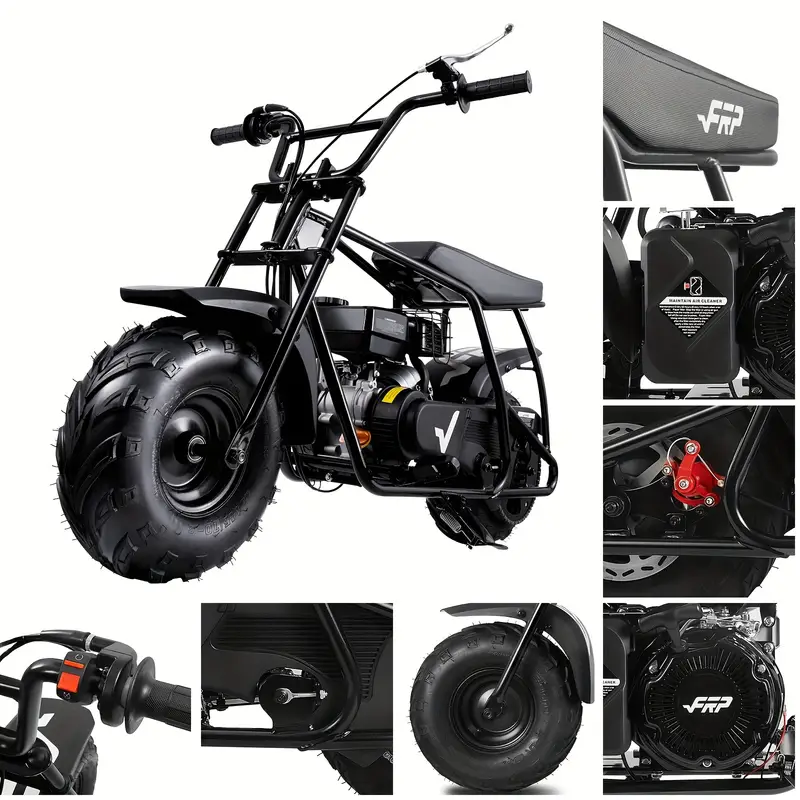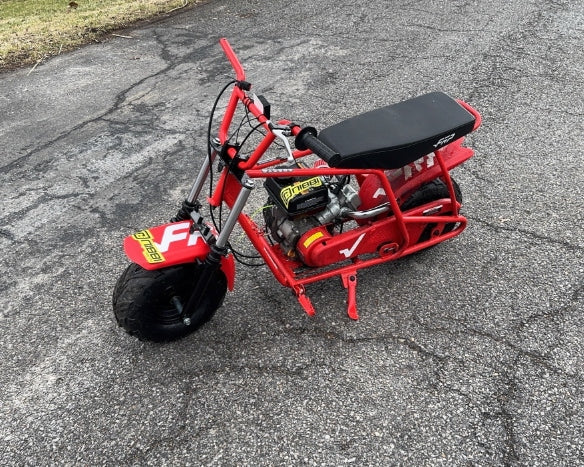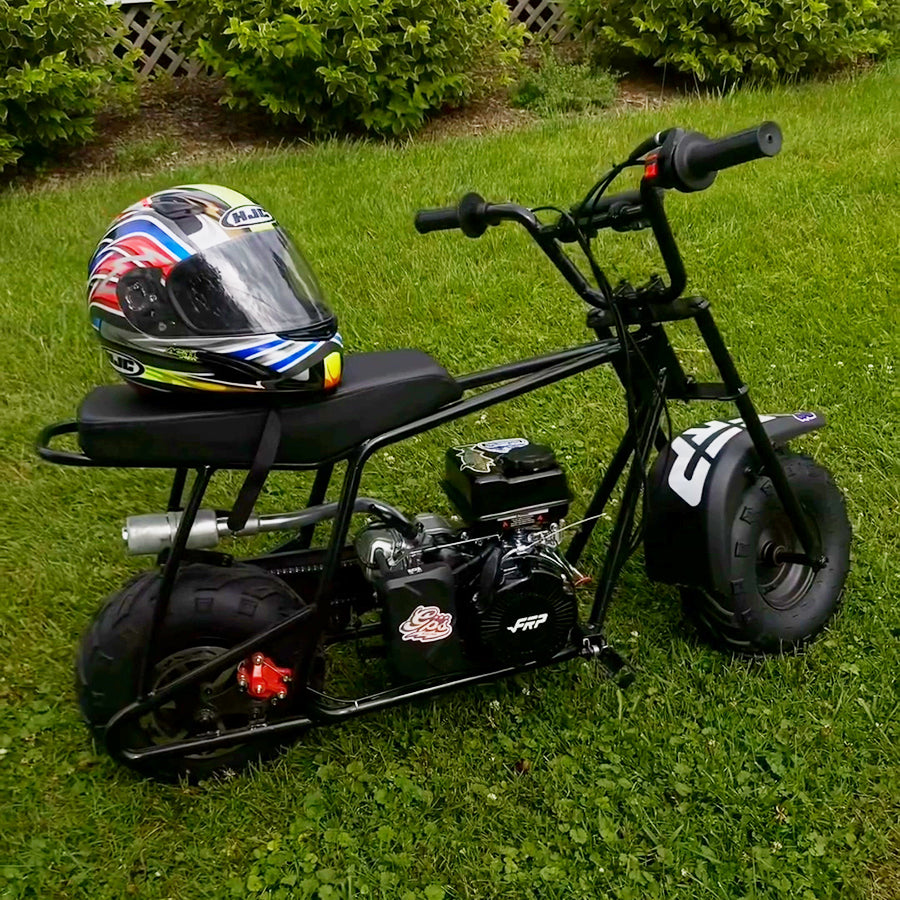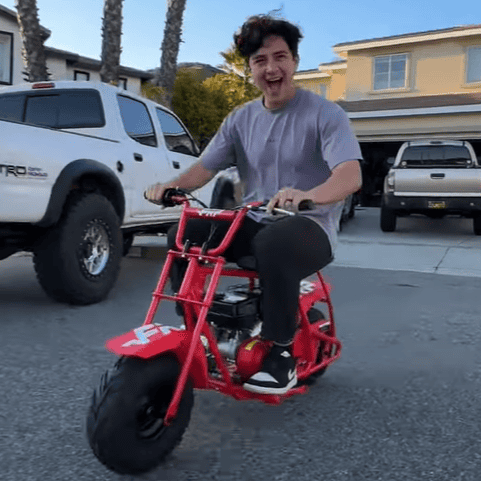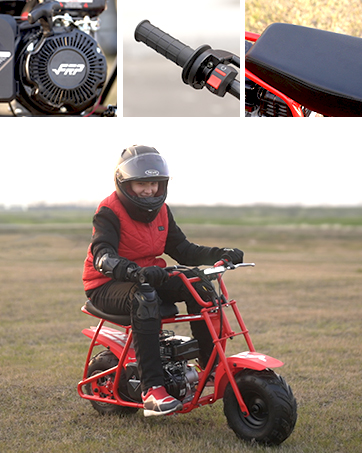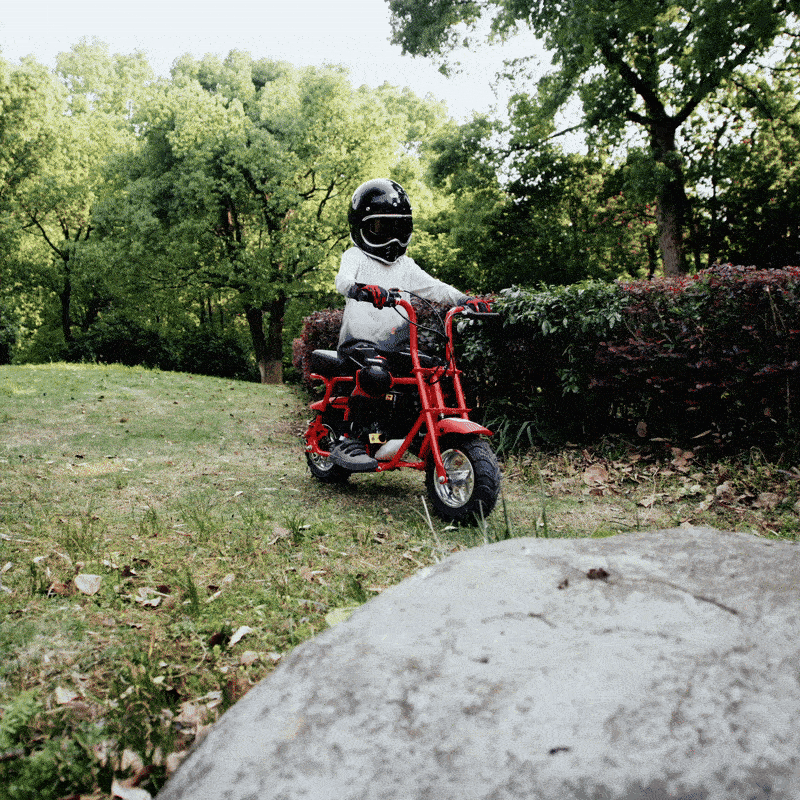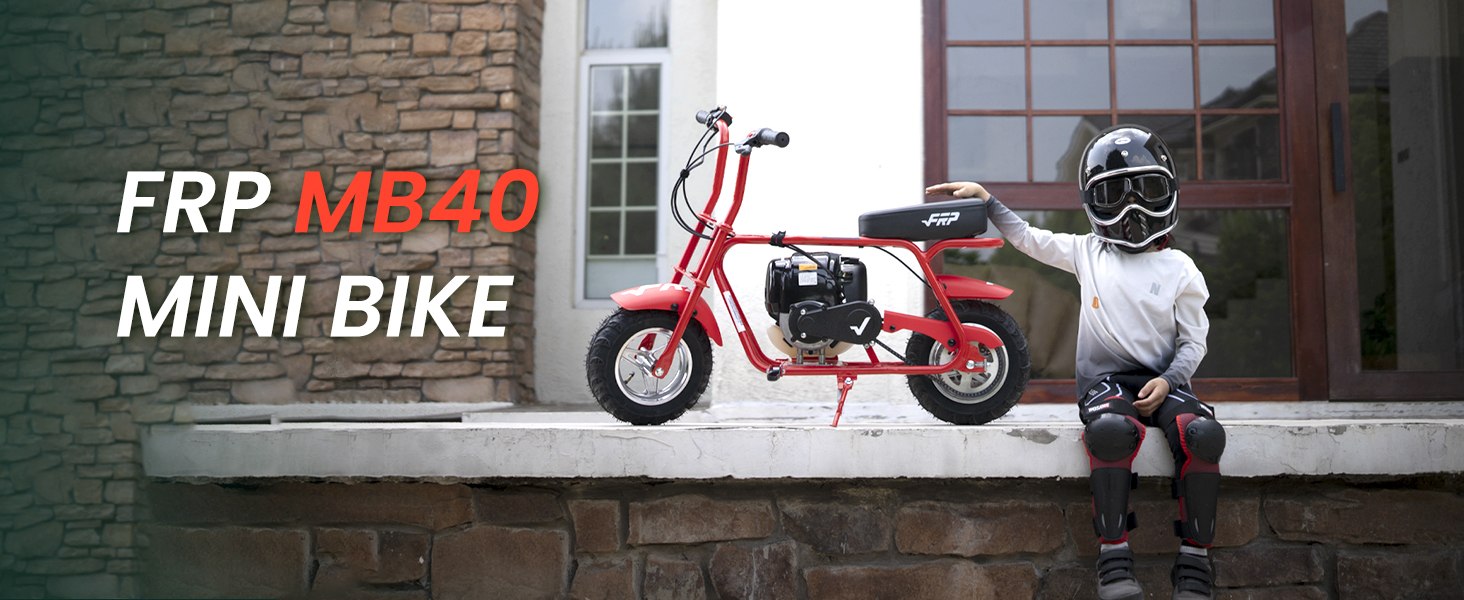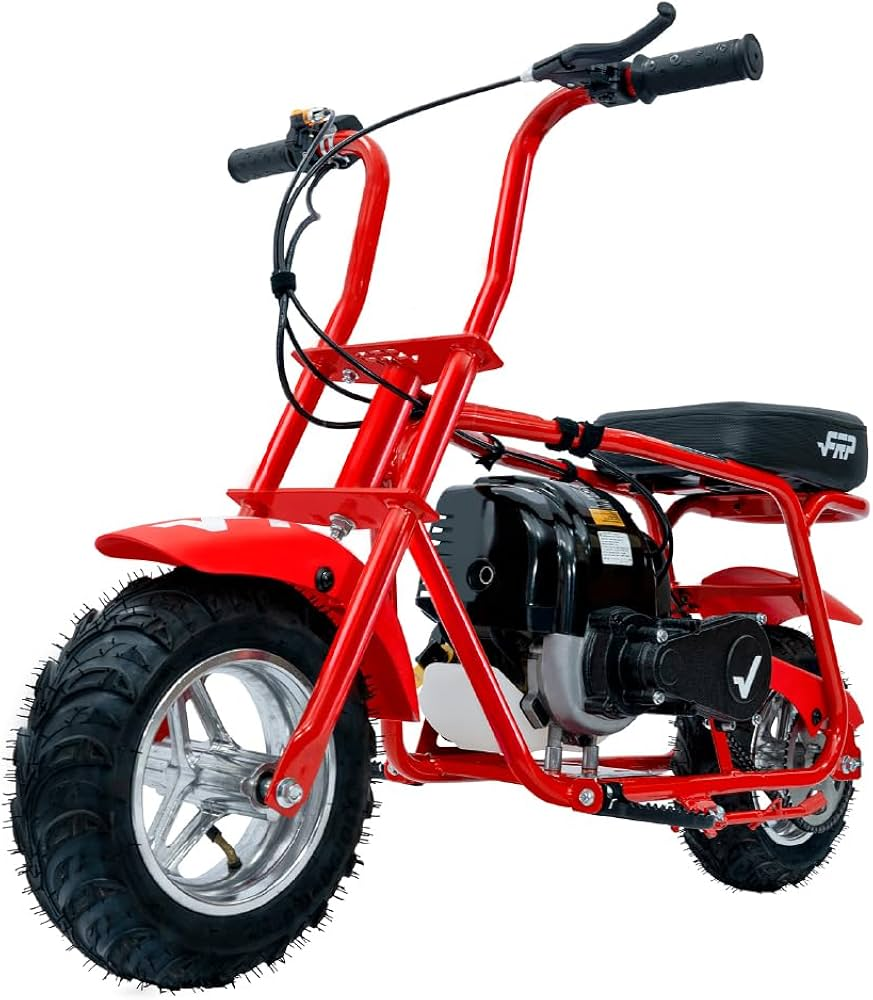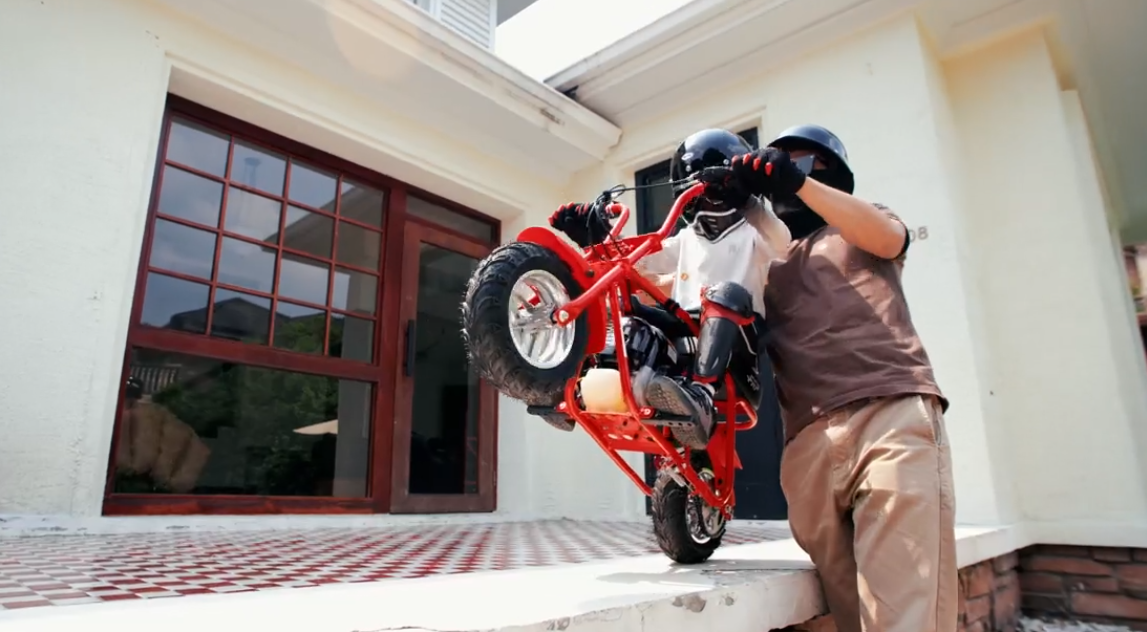Mini bike vs pocket bike: which one is right for you? That’s the question most new riders ask. They may look similar, but they serve very different purposes. Let’s break it down.
This guide helps you understand the fundamental differences between these two compact machines. If you're torn between fun, function, or family riding, we’ve got the answers. And if you haven’t heard of the GMB100 yet, get ready—it’s the 4 stroke mini bike changing everything in 2025.
This is your complete guide to choosing between mini bikes and pocket bikes based on power, safety, size, comfort, and cost.
Understanding the Basic Differences
What Defines a Mini Bike
A mini bike is a small motorcycle. But don’t let the size fool you. These bikes have:
● Bigger wheels and a larger frame for stability
● More engine power
● Better performance on grass, gravel, or pavement
● A higher weight capacity, often supporting adults up to 220 pounds
They’re built for fun, but also for comfort and control.
What Defines a Pocket Bike
If you're wondering what is a pocket bike, think of a miniature sportbike. These are small, light, and fast. Most pocket bikes:
● Have a low ride height
● Use smaller wheels
● Are made for short rides or racing
● Often cater to children or teens under 150 pounds
They look like superbikes but are a fraction of the size.
Key Design Philosophy Differences
● Mini bikes: Focused on casual riding, family fun, and all-around comfort
● Pocket bikes: Made for thrill seekers and racers who love the look and feel of sportbikes
● One offers versatility, the other offers specialized performance

The GMB100: Mini Bike Excellence in Action
Engine Power
The GMB100 doesn’t hold back. It features a 99cc OHV 4 stroke mini bike engine. That means:
● Real power without the smoke of 2-strokes
● A top speed of 24 mph for safe but exciting rides
● A 0.36-gallon tank that lasts up to 30 miles
● Enough power for hills, trails, and uneven terrain
This is one bike that proves pocket bike vs mini bike debates can be won with engine quality alone.
Build That Lasts
● Weighs just 79.5 pounds—light enough to lift, stable enough to ride
● Supports up to 220 pounds, great for both teens and adults
● 13-inch tires that grip dirt, grass, and pavement easily
● 85% assembled on arrival—ride it within an hour
Safety First
● Rear disc brakes stop you quickly
● Chain guard keeps your clothes and skin safe
● Emergency shut-off switch adds protection
● Built to handle rough play without breaking
Size and Weight Comparison
Mini Bike Specs
● Taller and wider than pocket bikes
● Higher ground clearance for bumps and dips
● Feels solid when riding
● Upright seating that reduces back strain
Pocket Bike Specs
● Fits in tight spaces and smaller storage areas
● Lower center of gravity
● Feels nimble, but less stable
● Sporty seating position—not the most comfortable
Real-World Differences
● Mini bikes are better for longer rides
● Pocket bikes are easier to carry or store
● You’ll need more garage space for a mini bike
● You’ll feel more secure on uneven roads with a 4 stroke mini bike
Engine Performance and Power
Mini Bike Engines
● Larger engines: 79cc, 99cc, or more
● Usually 4-stroke, which runs cleaner and smoother
● Less maintenance needed
● Handles weight better
Pocket Bike Engines
● Often 40cc or 50cc, mostly 2-stroke
● Designed to be fast but not powerful
● Higher wear and tear
● Best for flat, smooth tracks
Real-World Performance
● Mini bikes climb better, ride longer, and offer more torque
● Pocket bikes win in short sprints
● 2-stroke engines burn oil and fuel faster
● Maintenance on pocket bikes is trickier due to engine type
Riding Experience and Comfort
Mini Bike Comfort
● Upright seating position
● Wide handlebars for control
● Can ride for 30–60 minutes without fatigue
● Designed for fun, not racing
Pocket Bike Feel
● Crouched sportbike stance
● Tight handlebars
● Meant for short races or play
● Best for riders with racing experience
Ergonomics Matter
● Mini bike seats are padded and supportive
● Handlebar reach is natural
● Less vibration on your hands and feet
● Pocket bikes vibrate more due to engine size and design
Safety Features and Considerations
Mini Bike Safety
● Disc brakes or drum brakes depending on the model
● Guarded chains and mufflers
● Emergency switches or kill switches
● Strong frames that resist bending or snapping
Pocket Bike Safety
● Smaller brakes
● Chain often exposed
● Low visibility to cars or trucks
● Not ideal for street use without modification
Gear You’ll Need
● DOT-approved helmet
● Elbow and knee pads
● Gloves and boots
● High-visibility vest if riding near roads
Training helps too. Always teach young riders how to brake, steer, and shut off safely.
Maintenance and Reliability
Mini Bike Maintenance
● Fewer oil changes
● Fewer parts to replace
● Easy access to engine and chain
● Most brands use reliable components
Pocket Bike Maintenance
● Needs more tuning
● Smaller engine means more frequent care
● Chain and brakes wear faster
● Some brands cut corners on build quality
Long-Term Reliability
● Mini bikes like the GMB100 can last years
● Pocket bikes may need repairs sooner
● Parts for mini bikes are easier to find
● Higher resale value for well-kept 4 stroke mini bike models
Cost and Value Considerations
Purchase Price
● Pocket bikes start around $300–$600
● Mini bikes start around $600–$1200
● GMB100 is around $500, a great value
Operating Costs
● Mini bikes use regular gas
● Less oil use with 4-stroke engines
● Pocket bikes may need premix fuel
● Repairs cost more for pocket bikes over time
Resale and Longevity
● Mini bikes hold value due to quality parts
● Demand for adult-capable models is rising
● Easier to upgrade parts
● Pocket bikes have limited resale appeal
Choosing Between Mini Bikes and Pocket Bikes
Mini Bike Wins For:
● Family use
● Adults or heavier teens
● Long trail rides
● Learning how to ride safely
Pocket Bike Wins For:
● Small kids under 100 pounds
● Racing or stunts
● Storage in tight places
● Quick trips in private areas
Final Choice Depends On:
● Age and size of rider
● Terrain you'll ride on
● How often you’ll use it
● Your budget and expectations
Still unsure? Learn more from Mini Bike Riders Hub or explore comparisons at Pocket Bike Pro Guide.

The GMB100: Why Mini Bikes Lead the Category
Power That Matters
● 99cc engine is stronger than most pocket bikes
● Carries up to 220 pounds
● Reaches 24 mph—fun, but not scary
● 30 miles on one tank
Built for Safety
● Disc brakes stop fast
● Chain guard and safety switches included
● Wide tires give better balance
● Feels secure for all ages
Value That Lasts
● Holds resale value well
● Parts are easy to replace
● Can upgrade tires, lights, and brakes
● Keeps running strong with basic care
Conclusion
The GMB100 proves that mini bikes aren’t just toys—they’re real machines with serious value.
When you compare a pocket bike vs mini bike, three things matter most:
1. Your size and age
2. How you plan to ride
3. What features matter most to you
If you want fun, comfort, and lasting value, a four-stroke mini bike like the GMB100 might be your best choice.
Now’s the time to ride smarter. Explore your options, test both bikes, and pick the one that fits your world. I hope you now understand what is a pocket bike and mini bike are and which one to choose ac

